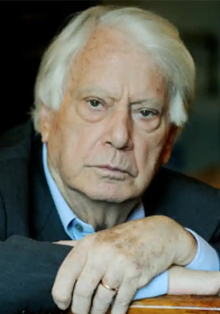The Fundación Pablo Iglesias and the Escuela Julián Besteiro invite you to the opening of the exhibition Jorge Semprún. A European life in the 20th century, which will take place this evening at 7 p.m. at the Escuela Julián Besteiro (Calle Azcona, 53, Madrid). The exhibition will remain on display until 30 June from Monday to Friday, from 9 am to 2 pm.
María Luisa Carcedo, President of the Fundación Pablo Iglesias, and Isabel Navarro Cendón, Director of the Julián Besteiro School, will take part in the opening ceremony.
A Spanish screenwriter and writer, Jorge Semprún spent most of his life in France, where his family went into exile after the end of the Spanish Civil War, which is why much of his work was originally written in French.
With strong political convictions, Semprún fought with the Resistance against the German invasion, and was imprisoned in the Buchenwald prison camp (something that would mark his life and his writing forever). After the war and until 1964 he was a member of the leadership of the PCE.
After this period in active politics, Semprún focused on his literary career, at least until the end of the 1980s, when he accepted a post in the Spanish Government as Minister of Culture.
His work is markedly autobiographical, with novels such as El largo viaje (1963), Autobiografía de Federico Sánchez (1988), which won him the Planeta Prize, and the screenplays for Stavinsky and Z, which was directed by Costa Gavras.
Jorge Semprún received several awards, such as the aforementioned Planeta Prize, the José Manuel Lara Prize and the Medal of Merit in the Fine Arts in 2008.







